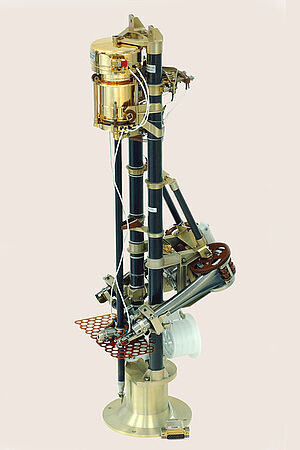MUPUS

MUPUS (Multi-Purpose Sensor) served for the in-situ measurements of important material parameters of the cometary nucleus such as heat transfer and solidity. It consists of multiple components (penetrator, IR-sensor, anchor-temperature sensor and anchor-accelerometer), which were steered by a common electronics.
The development of the instrument was done in an international cooperation under lead of Prof. Tilman Spohn, nowadays leader of the Institute for Planetary Physics at DLR Berlin. During the development phase IWF contributed to the anchor-accelerometer and thermal sensors, as well as to the MUPUS penetrator. The technology developed for MUPUS to determine the heat transfer will also be used for other missions (e.g. to the Moon, Mars and asteroids), as well as for terrestrial purposes. During the cruise phase of Rosetta, laboratory tests were performed and calibration with the "ground reference model" of the MUPUS penetrator and similar terrestrial instruments (EXTASE). Also numerical simulations of the thermal behavior of the penetrator on the surface of the comet were performed. These activities were important for a successful analysis of the MUPUS data after Philae landed on the surface of comet 67P/Churyumov-Gerasimenko.
Further information about MUPUS can be found at ESA.